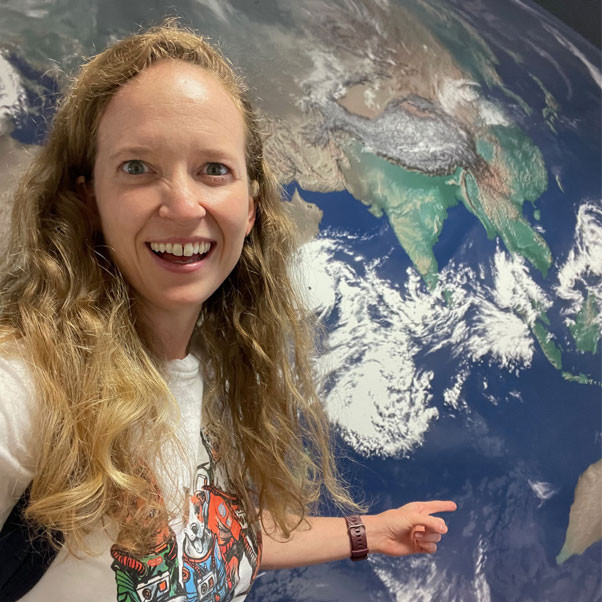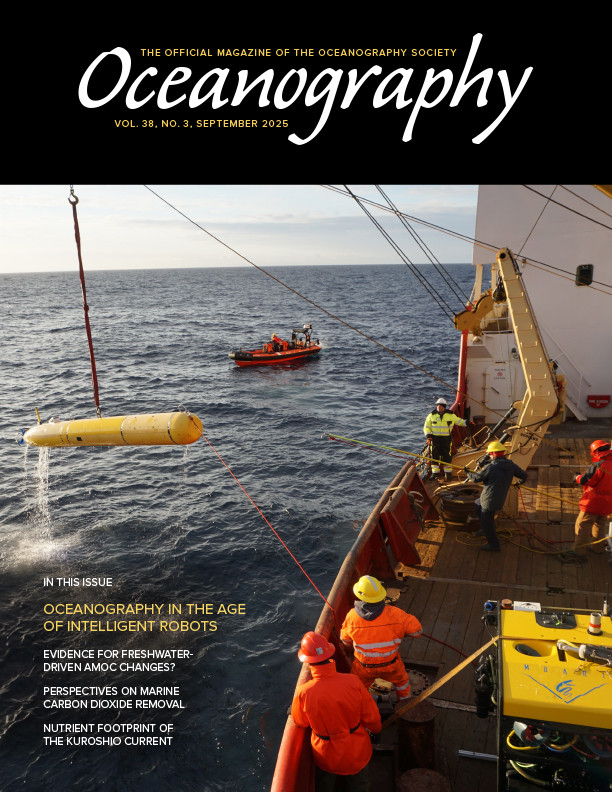Full Text
 |
Paige E. Martin, User Training Team Lead, Australia’s Climate Simulator (ACCESS-NRI)
Degree: When, where, what, and what in?
I earned my bachelor’s degree in physics (with a minor in French) from Harvard University in 2011. After spending a year taking classes and doing research in Berlin, Germany, I pursued a PhD in physics (specifically, physical oceanography) at the University of Michigan, finishing in 2019.
Did you stay in academia at all, and if so, for how long?
After completing my PhD, I continued to work for my PhD advisor for about 10 months to wrap up a research project (while living in Australia). I was then thrilled to be offered a postdoctoral position at the Lamont-Doherty Earth Observatory of Columbia University in New York. However, the COVID-19 shutdowns intervened before I had the chance to move to New York City to start the position. I ended up working as a postdoc at Australian National University in Canberra, Australia, for just over a year, while beginning collaboration with the Columbia University group. Finally, I moved to New York City and started my Columbia University postdoc. I stayed there for six months.
How did you go about searching for a job outside of the university setting?
After finishing my PhD, I applied to one or two non-academic jobs that I found listed on the Earth Science Jobs Network email list. I never heard back from those jobs and ended up deciding I should look at more postdoctoral positions. I went that route for the first few years post-PhD.
During my Lamont postdoc, I heard about a job opening at NASA from someone in my (academic) professional network whom I met co-convening a couple sessions at online conferences during the COVID-19 shutdown. It was a job in “open science,” directed toward someone with a solid scientific research background but also knowledge and experience with open science (such as open-source software, open data, and generally making science more accessible). My interests and experience lined up extremely well, and I decided to apply. But before applying, I talked with someone who had a similar position at NASA to get a sense of the job—something I always recommend doing (for academic and non-academic jobs alike).
Is this the only job (post-academia) that you’ve had? If not, what else did you do?
No, I am currently working in my second job post-academia.
My first job post-academia was as a support scientist at NASA, working in the Office of the Chief Science Data Officer at NASA Headquarters. I helped support NASA’s open science movement as part of the Transform to Open Science (TOPS) project. This included running a funding solicitation and helping with strategic planning around how to make NASA science more open—more accessible, more reproducible, more impactful.
As part of this job, I attended conferences, met scientists around the globe, and talked with them about making their science more open. I helped to co-create and write a curriculum on open science and to conduct training sessions at scientific conferences. I was also involved in running an international open science competition, and I helped conceptualize an open science recognition challenge through the White House Office of Science and Technology Policy. The job was a whirlwind of exciting opportunities and incredible learning experiences.
What is your current job? What path did you take to get there?
I am the User Training Team Lead at Australia’s Climate Simulator (ACCESS-NRI). ACCESS-NRI is a climate modeling institute—we develop and maintain the software behind climate models for the Australian research community. We are nationally funded but housed at Australian National University. My role is to coordinate and plan the technical training for ACCESS-NRI. This sometimes involves delivering the training, but more often I provide support by reviewing the training materials and by handling the coordination/logistics of training events. We also coordinate other user-facing activities, including user support, online technical documentation, and an internship program. I also supervise one team member (we are a team of two!).
I admit that being a training lead was not on my radar before I got the job. My path to this job started with the tough decision to leave my NASA job to move to Australia with my husband. Even though I loved the job at NASA, my husband and I wanted to settle down in Canberra, and I wasn’t able to work for NASA from abroad. So, I arrived in Canberra with no job lined up.
This was the first time I made a decision based on the lifestyle I wanted rather than the job, and it is a decision I am proud of. Through proactive networking and a bit of luck, it has worked out very well for me. Soon after moving to Canberra, I reached out to the current director of ACCESS-NRI, who was also my former supervisor while at Australian National University. From that discussion, I was able to start part-time work as a research software engineer at ACCESS-NRI. Soon after, I applied for the User Training Team Lead position that had just been advertised, and I started the role four months after moving to Australia.
What did your oceanographic education (or academic career) give you that is useful in your current job?
My background in oceanography is extremely useful for this position. It is helpful to understand how climate models work at a fundamental level, and also to have experience running climate models and using open-source software to work with climate model output. More generally, it’s helpful for me to have had an academic background, because I mostly support academics in my training role at ACCESS-NRI.
Is there any course or other training you would have liked to have had as part of your graduate education to meet the demands of the job market?
I would have liked more training around the computational tools we use to do science: the software, data, and computing platforms. These skills are foundational for most academic and non-academic jobs.
Is the job satisfying? What aspects of the job do you like best/least?
I find my job very satisfying. By the end of my PhD, I knew that I didn’t want to be a researcher, but I still really liked being part of the scientific research community. In my current job, I get to contribute meaningfully to scientific research by enabling others to do their research. It allows me not only to stay very close to the software and coding side of climate science but also to interact regularly with researchers. To me, this is very satisfying and impactful.
I particularly like working in a collaborative environment in my current (and actually each post-PhD) job. A downside is that I have to spend some of my time handling training logistics, but that is part of a training position.
Do you have any recommendations for new grads looking for jobs?
Career paths today are rarely straight lines. They are often far curvier and bumpier than a written CV makes them look. CVs on paper often gloss over all the unknowns at each step, the difficult decisions that must be made, and the time we often spend between jobs. When I look at my own CV, it looks like every step of my career was smooth. That’s certainly not how it felt! The reality is that there were a lot of unknowns at each step, and there was a lot of questioning myself about what I actually wanted to do. We each follow our own path and at our own pace.
I will also echo what many others have written in these career profiles: don’t be shy to lean on your networks. I was (pleasantly) surprised by how many people were happy to have a (virtual or in-person) chat with me to discuss career-related topics at various stages in my career path. These discussions have been incredibly helpful as I have navigated my professional career path.
Lastly, the right career path isn’t just about the job—it’s about finding a balance with your personal/family life as well. You can have a successful and meaningful career even if you prioritize your personal life sometimes.

